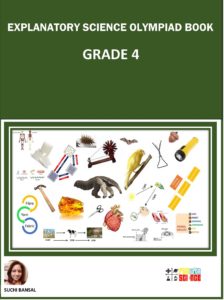SATELLITES
Home » SATELLITES

Subscribe to our Newsletter
SATELLITES
· Some of these planets have smaller objects called moons that move around them. The moon is called the satellite of the Planet.
· The moon revolves around the earth. On a clear night we see the moon in the sky.
· Each satellite revolves around its own planet.
NATURAL SATELLITE:
· Some of the planets have smaller objects called moons that move around them. The moon is called the satellite of the Planet.
· The moon is a big ball of rock. A thin layer of dust covers its surface. Moon is smaller than the Earth and it moves around the Earth. No life has been found on moon so far. Although it is nearly 400,000 kilometers away from us and it is our nearest neighbor in space.
ARTIFICIAL SATELLITE:
· The artificial satellites are man-made. They are launched from the Earth.
· India has built and launched several artificial satellites. Aryabhata was the first Indian satellite. Some other Indian satellites are INSAT, IRS, Kalpana-1, EDUSAT, etc.
· They are used for forecasting weather, transmitting television and radio signals. They are also used for telecommunication and remote sensing.
Some Famous Satellites:
Sputnik 1
Russia stunned the world in October 1957 when it announced it had placed the first man-made object in orbit around the Earth, the basketball-sized Sputnik 1.
Explorer 1
America replicated the success of Russia three months later when it launched its first satellite, Explorer 1, which discovered the belts of radiation around Earth.
Echo 1
NASA launched this giant balloon, 30 metres in diameter, in 1960. It reflected incoming signals and was the world’s first rudimentary communications satellite.
Satcom
Developed by RCA Americom, Satcom 1 (launched 1975) pioneered US cable TV broadcasts with high-profile networks and spurned the age of satellite TV.
International Space Station
Construction of the world’s largest man-made satellite began with the launch of the Zarya module in 1998, and is scheduled for completion in mid-2012.
BOOKS
We have our e-books published on Amazon for Grade 3 and Grade 4. The books serve as an important guide for Science Olympiads organized by SOF, Silverzone, Unified Council and others. Books are designed to help students understand key science concepts.
The key highlights of the book are:
· Well explained topics
· Use of diagrams and images for
students to visualize
· Test exercise after each chapter for self-assessment and evaluation
· Interesting facts sections spread across the book
Here are the links:





